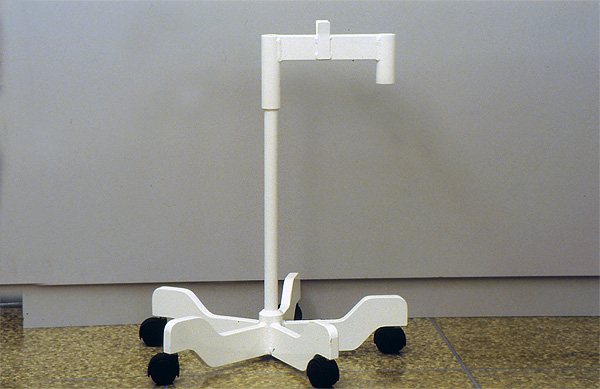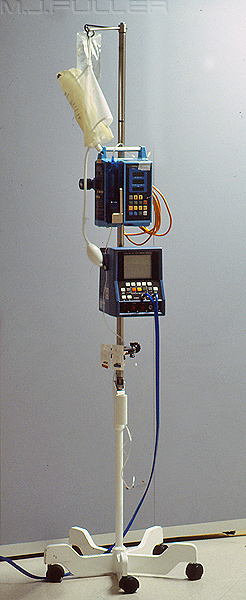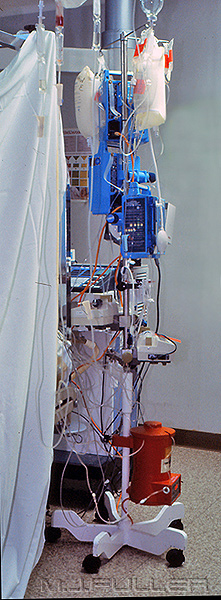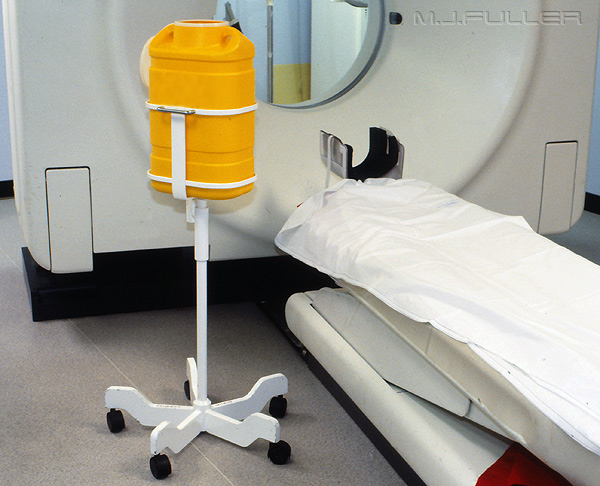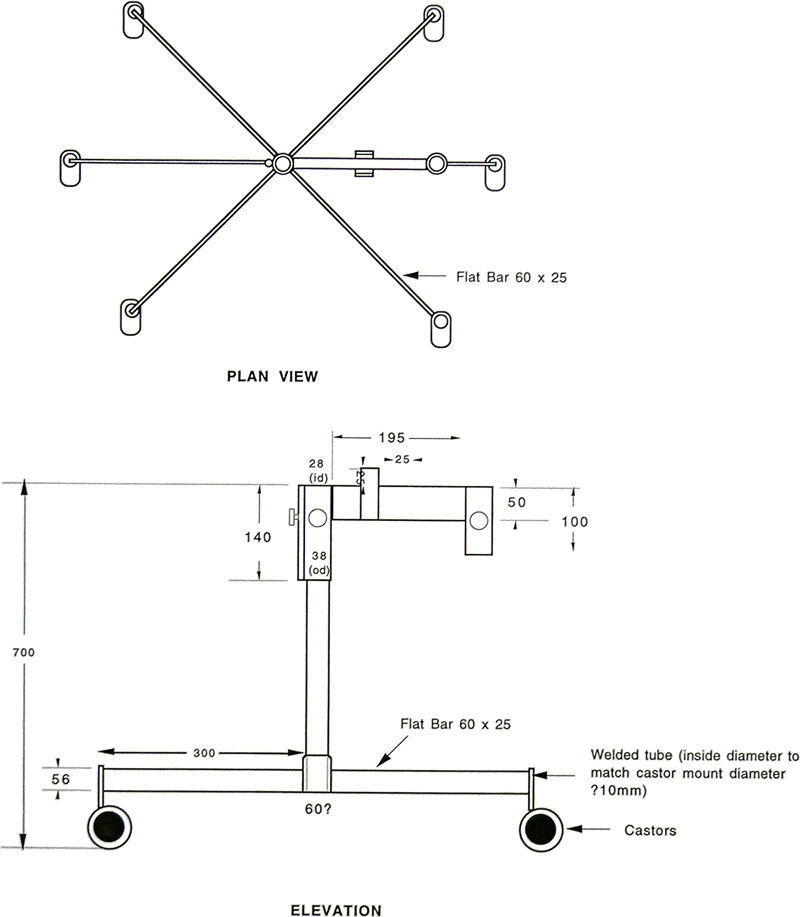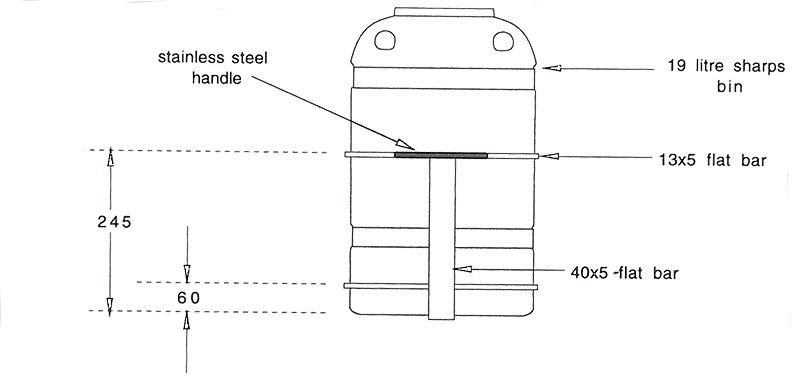The Fronsko Dripstand Base
Introduction
If you are employed in a hospital with an intensive care unit, you will probably be familiar with the exercise of transferring drips and infusion pumps from the drip stand attached to the patient's bed to a mobile drip stand. This process can add 10 minutes to the beginning of a procedure and 10 minutes to the end of a procedure. The Fronsko Dripstand Base (FDB) was designed to eliminate the need for transferring drips and pumps to a mobile drip stand.
How does it work?
The concept behind the FDB was to have a very heavy mobile base that would accommodate the drip stand attached to the patient's bed. The dip stand pole is simply lifted off the bed and placed into the FDB.
The FDB is made of powdercoated mild steel. The legs are solid 25mm flat bar. The unusual configuration at the top is to accommodate a particular type of drip stand that was in use at the time. The wheels are lightweight casters.
When the patient arrives for a procedure in the X-ray department, the drip stand attached to the patient's bed is lifted off and placed in the FDB as shown below.
The FDB has a very low centre of gravity and will remain relatively stable even under heavy loads. After many years of use it has never fallen over (that's not to say that it couldn't- take care).
A sharps bin attachment was designed for use in CT. This ensured that the FDB was in use most of the time. The sharps bin attachment was removed when an ICU patient with bed-mounted drips arrived for CT imaging.
The FDB is basically a time saving device which makes an imaging examination on a patient who has been transferred from the Intensive Care Unit a much quicker procedure.
It is useful to have two FDB's on hand for patients with two bedmounted drip poles
Disadvantages
- A heavily laden bed-mounted drip stand can require two people to safely lift it into the FDB.
- If the ICU changes its beds, the new beds may require the FDB to be altered.
- Some ICU beds do not have removable drip stands
- Definitely cannot be used in MRI (although I suspect a non-ferrous version could be made with aluminium and lead)
- Lowering a bed or imaging equipment onto the FDB is hazardous
Design Modifications
- A newer model was made that accommodated different sizes/diameters of drip poles.
- A locking screw was incorporated which could be used to hand tightened the transferred drip pole into the FDB
- The casters do not move as well as they should. A more expensive caster will be used on future models.
- The goose-neck in the legs of the base may be unnecessary. The FDB will be much easier to manufacture if the legs are straight.
- Do not try and make one with less than 5 legs- it will be too unstable
The Fronsko Drip Stand Base has proven itself over many years to be a potent time-saver and is relatively easy to manufacture.
